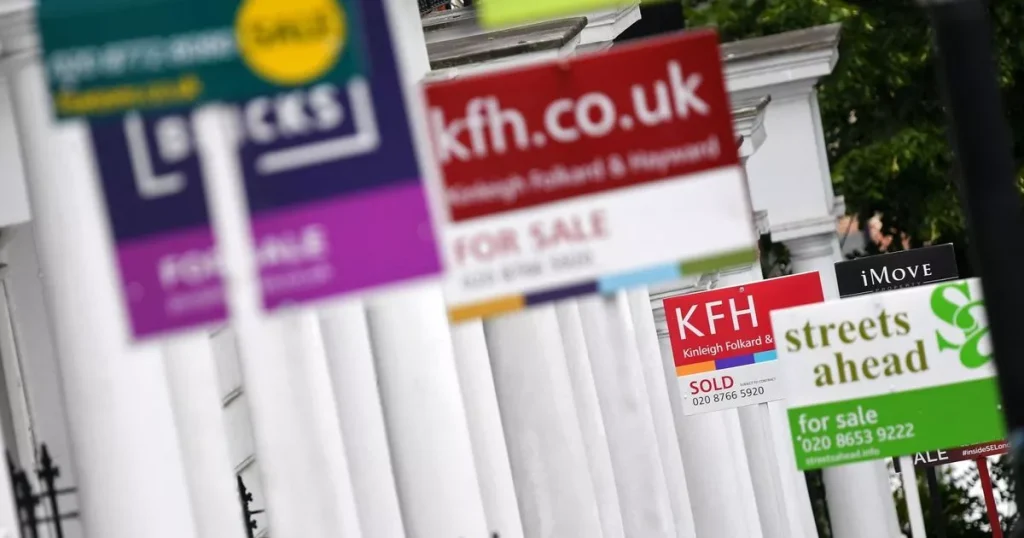Stamp duty changes explained in full – see how much more you’ll likely pay next year

Rachel Reeves has announced huge changes to stamp duty in her Autumn Budget – but how does this affect you?
Stamp duty is a tax that sometimes has to be paid when you buy a property. Whether you need to pay stamp duty depends on the price of the property you’re buying and if you’re a first-time buyer. There are also different stamp duty thresholds which affect how much you may need to pay depending on if you live in England, Scotland, Wales or Northern Ireland.
Under current rules in England and Northern Ireland, you have to pay stamp duty if your property is your only residence and is worth over £250,000. This higher rate was introduced in September 2022 but is due to go back down to its previous level of £125,000 in March 2025.
If you're a first-time buyer, you currently only start to pay stamp duty if the property you're buying is worth over £425,000 – but this will go back down to £300,000. There had been hopes that the higher thresholds would be extended, but no such announcement was made in the Autumn Budget.
Will changes to stamp duty affect you? Let us know: mirror.money.saving@mirror.co.uk
7 money changes coming in November 2024 from new DWP payments and energy bills update
Sainsbury's makes major change to 1,400 stores – and it could help save you money
How is stamp duty changing?
Here are the current stamp duty rates in England and Northern Ireland that will remain in place until March 31, 2025:
-
Purchase price – up to £250,000 (£425,000 for first-time buyers) ; Rate for main residence – 0% ; Rate for additional properties – 5%
-
Purchase price – £250,001 to £925,000 ; Rate for main residence – 5% ; Rate for additional properties – 10%
-
Purchase price – £925,001 to £1,500,000 ; Rate for main residence – 10% ; Rate for additional properties – 15%
-
Purchase price – £1,500,000 and above ; Rate for main residence – 12% ; Rate for additional properties – 17%
Here is how stamp duty rates will change in England and Northern Ireland from April 1, 2025:
- Purchase price – up to £125,000 (£300,000 for first-time buyers) ; Rate for main residence – 0% ; Rate for additional properties – 5%
- Purchase price – £125,001 to £250,000 ; Rate for main residence – 2% ; Rate for additional properties – 7%
- Purchase price – £250,001 to £925,000 ; Rate for main residence – 5% ; Rate for additional properties – 10%
- Purchase price – £925,001 to £1,500,000 ; Rate for main residence – 10% ; Rate for additional properties – 15%
- Purchase price – £1,500,000 and above ; Rate for main residence – 12% ; Rate for additional properties – 17%
First-time buyers currently only benefit from reduced stamp duty rates if they buy a property worth £625,000 or less. This will reduce to £500,000 from next April.
Stamp duty in Scotland and Wales
Stamp duty is known as land and buildings transaction tax in Scotland and the following rates apply:
-
Purchase price – up to £145,000 (£175,000 for first-time buyers) ; Rate for main residence – 0% ; Rate for additional properties – 6%
-
Purchase price – £145,001 to £250,000 ; Rate for main residence – 2% ; Rate for additional properties – 8%
-
Purchase price – £250,001 to £325,000 ; Rate for main residence – 5% ; Rate for additional properties – 11%
-
Purchase price – £325,001 to £750,000 ; Rate for main residence – 10% ; Rate for additional properties – 16%
-
Purchase price – £750,000 and above ; Rate for main residence – 12% ; Rate for additional properties – 18%
In Wales, stamp duty is known as transaction tax and the current rates are applied to property purchases:
-
Purchase price – up to £225,000 ; Rate for main residence – 0% ; Rate for additional properties – 4% up to £180,000 then 7.5% after this
-
Purchase price – £225,001 to £400,000 ; Rate for main residence – 6% ; Rate for additional properties – 9%
-
Purchase price – £400,001 to £750,000 ; Rate for main residence – 7.5% ; Rate for additional properties – 11.5%
-
Purchase price – £750,001 to £1,500,000 ; Rate for main residence – 10% ; Rate for additional properties – 14%
-
Purchase price – £1,500,000 and above ; Rate for main residence – 12% ; Rate for additional properties – 16%
How do you pay stamp duty?
A lower stamp duty threshold could cost buyers potentially tens of thousands of pounds extra, again, depending on how much the property you’re buying is worth. You pay stamp duty on the portion of your property where it applies. So for example, after the thresholds go back down, if you're purchasing a property worth £300,000 and you're not a first-time buyer, you would pay no stamp duty on the first £125,000.
You would then pay 2% on the part that is worth between £125,001 and £250,000 (equivalent to paying 2% on £125,000) and 5% between £250,001 and £300,000 (equivalent to paying 5% on the remaining £50,000). The total stamp duty bill would be £5,000. Normally, your solicitor will help you pay your stamp duty bill, although you can also do it yourself online.
It is also possible to add stamp duty to your mortgage if your lender agrees to let you do this – but keep in mind, this can affect your affordability and means you'll be borrowing more, which will increase how much you pay back in interest over time.
Boots shoppers who spend £39 can get £135 worth of No7 makeup and skincare with special code



